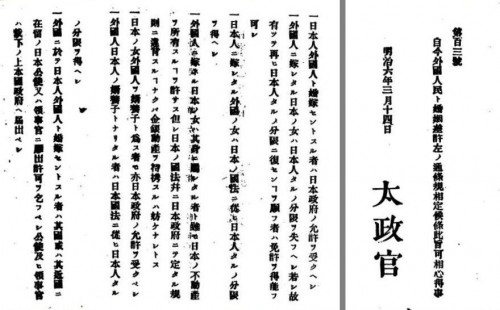There have been many many reports about what it’s like on the ground after the earthquake, but I thought I would offer my perspective.
The day of the earthquake, I was working in downtown Tokyo on the 29th floor of a two-year-old office building. At around 2:40pm it started rumbling, then swaying sharply back and forth. The bucho yelled for everyone to take cover, so we put on our emergency helmets and hid under the desk. The swaying continued for what felt like forever. Thinking this might be the end, I tried frantically to get my wife on the phone but it did not work. I got a hold of Mrs. Adamu via the office phones and she was fine.
Not knowing what else to do, some of us kept working on reports that needed to get published that day, even amid the aftershocks. Around 6, we started making plans to go home.
The head translator and I made our way to Ueno, where he wanted to get a hotel room. My plan was to continue all the way home. The streets were packed with people trying to get home, but it felt more like the crowd after a baseball game than a disaster. At a bicycle shop, some people were purchasing bikes to get home faster. I decided that would be a waste of money. The hotel rooms were all packed so I had the head translator stay with me.
At Ueno we decided to stop by Shoryu, a Chinese restaurant known for its big gyoza. This might not have been the safest move, since a fierce aftershock could have trapped us in the basement floor where it was located.
After that, the walk home was just a slog. The throngs of pedestrians thinned to just crowds and then just a small group as we approached Katsushika-ku. The lines at the payphones died down around Asakusa where I updated Mrs. Adamu on our condition. On the way back, one family was offering passersby to use their toilet if necessary.
We eventually got home, turned on the TV and the first thing we saw was Kesennuma-shi on fire. Made me sick to my stomach. Wanted to shower but the gas had been turned off. We later realized it was an automatic shutdown for safety during the earthquake. The apartment was only lightly damaged. My computer monitor had been pushed forward off the front of the desk and was hanging by its cables. The laundry detergent had spilled behind the machine. For some reason all the sliding windows were open.
Couldn’t sleep because of aftershocks. The next morning Mrs. Adamu got late morning trains back home.
Since then life has been a little surreal. I have not missed a day of work, but I was among the very few in the office on Monday since the rolling power cuts left many train lines out of commission. The news is a constant, numbing stream of tragedy and emergency warnings. I have not really had the heart to do much blogging about it.
All in all, I am thankful that Tokyo was spared and cannot complain much about the situation given the devastation up north. Still, it’s tense and everyone is pretty nervous. Some friends and coworkers have sent their families elsewhere. Food is gone from the supermarket shelves. My mom has been receiving many many calls from friends and relatives asking about me, and she is freaking out about the nuclear situation.
You can follow my regular updates on Twitter at www.twitter.com/adamukun










